Nambu World: Showa 14.9 Type 94 Photos
I got this pistol in May, 2007 as
part of a multi-gun estate purchase. It is a fairly early one that is very
tight mechanically. It shows almost no wear to the bluing, but has several
spots of pitting. Here you can see one area, on the little plate peened in over
the locking block recess in the frame.
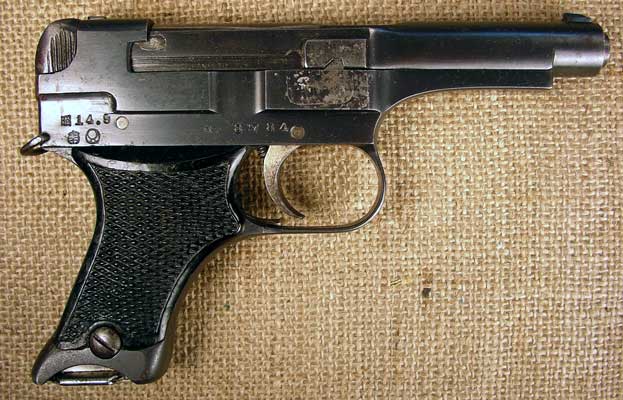
The left side shows somewhat worse
pitting near the muzzle end of the slide, to the left of the ejection port and
on top of the bridge at the rear of the frame.

The date 14.9 means the ninth month
of the 14th year of Emperor Hirohito’s reign, i.e. September, 1939. The
character in front of the date is the kanji character sho, short for Showa, the name of Hirohito’s reign. The two
characters below that are the symbols of the company Chuo Kogyo on the left and
Nagoya Arsenal on the right. Note that this order was reversed on later pistols
from about 16.8, around serial number 19000 (very early pistols up to about
14.1 also had the
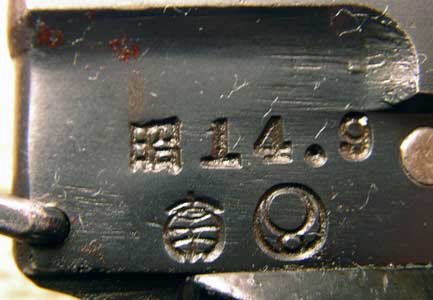
The serial number is still in four
digits over four years after production began in mid-1935. Total production
reached only a little over 71,000 before it ended in mid-1945.
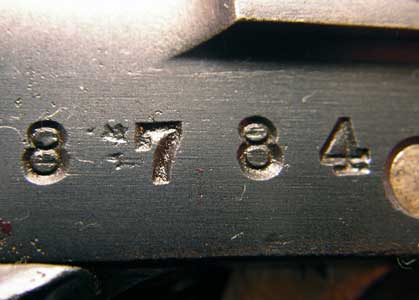
The serial number on the magazine
matches. The dot above the 8 indicates this was the spare issued with the
pistol. The symbol below the 8 is the kanji to as in
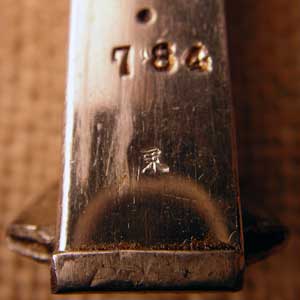
One unusual thing about the Type 94
is that if you hold it up to the light you can see a gap between the frame and
slide. This is not wear, it is just how the gun was
designed. This gun is mechanically one of the tightest I have and has a bore
that suggests it was hardly ever fired.
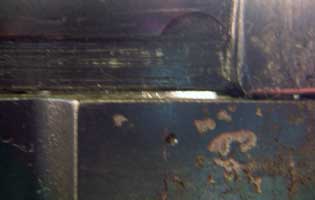
Let’s take a look at some of the
differences between early and late Type 94s. One obvious difference is the
level of finishing. Early guns have a much nicer bluing applied over finely
fitted and polished surfaces. Late ones have a thin, blacker bluing applied
over very rough surfaces. This change was a gradual one. The photo below shows
a more subtle difference: the grip on the left from this 14.9 date has coarser
checkering than the one on the right from a 19.6. The earliest Type 94s had
very fine checkering until about Showa 12.10. Then they switched to this
coarser checkering until about 14.2 (so 14.9 is
actually quite late for it to appear). Then they switched to a medium
checkering as shown on the 19.6 grip panel on the right. Eventually in 19.7
they dropped bakelite altogether in favour of plain slab wooden grips.
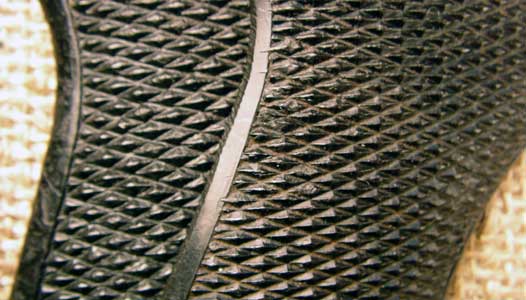
If you look at the underside of the
frame you can see a more noticeable change: on the 14.9 on top the frame and
slide are machined to be narrower (15mm) than on the 19.6 on the bottom (18mm).
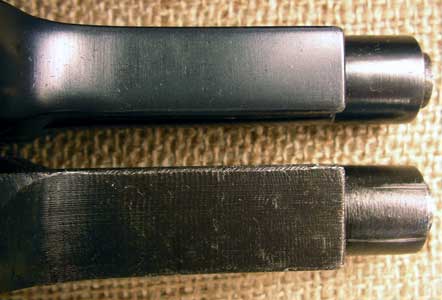
The trigger guard contour is also different on
the 14.9 (left) and 19.6 (right).
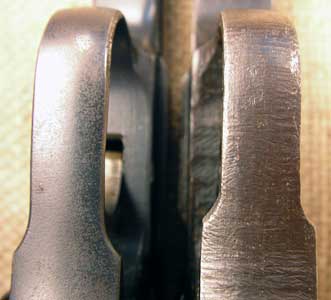
On early pistols like this 14.9 the raised
area at the rear of the frame surrounded the rear tip of the sear bar, which
was also raised so the two parts are flush.
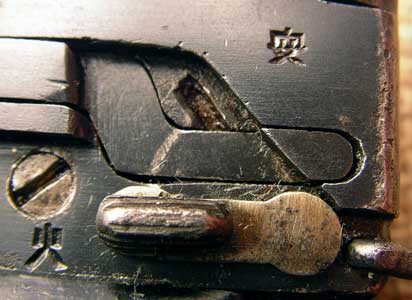
Here, for contrast, is a shot of the
same area on a 19.6. Note that the raised area around the sear bar has been
machined flat and the sear bar tip is now also flat.
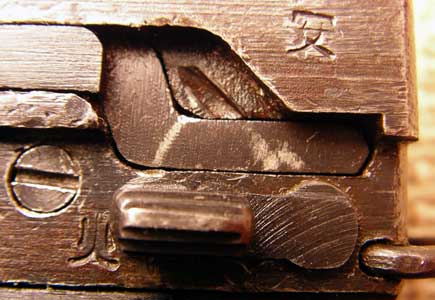
The spacing of the model designation
on the 14.9 is quite wide, spreading across 19mm. The characters read from
right to left: kyu-yon-shiki, or “Type
94”. Note also the relatively good fit of the front tip of the sear bar (this
is the spot that, if pushed when the safety is off, will fire the gun without
use of the trigger). The little line at the far left of the photo is not a
crack; it is the seam where a metal plate was peened in to cover the gap left
when the locking block area was machined. On early guns this is fairly well
done, but it is extremely noticeable on later, cruder guns.
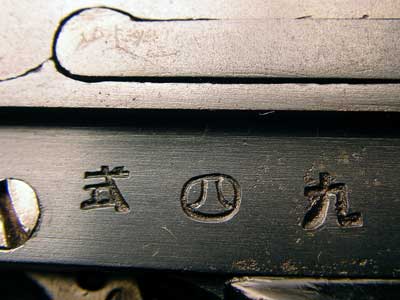
By contrast, on this 19.6 the model
designation character spacing is much closer, covering just 14mm. Note the much
cruder fit of the front tip of the sear bar.

Click here to go back to the Type 94 Photo
Gallery: Type 94 Photo
Gallery
Click here to go back to Nambu World: Teri’s
WWII Japanese Handgun home page: Nambu World: Teri’s WWII Japanese
Handgun Website
Last updated: May 23, 2007. All contents are copyright Teri
unless otherwise specified and may not be used elsewhere in any form without
prior permission.